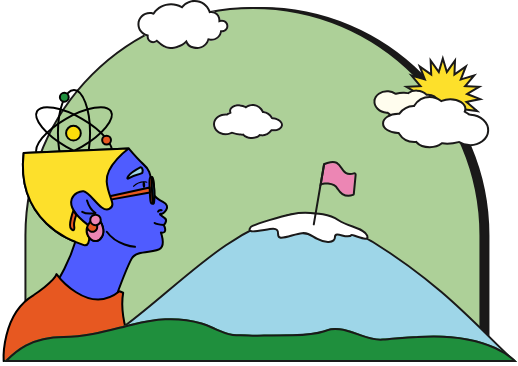
In 2025, technology permeates nearly every facet of our lives, blurring the lines between the digital and the physical. While innovation promises unprecedented progress, it's crucial to remember the human element. This guide explores the vital role of empathy and ethics in shaping technology, ensuring that innovation serves humanity and doesn't exacerbate existing inequalities or create new ethical dilemmas. We'll delve into practical strategies for incorporating human-centered design principles, navigating ethical challenges, and fostering a more equitable technological future.
The rapid advancement of technology in 2025 necessitates a renewed focus on its human impact. Automation, artificial intelligence, and bioengineering hold immense potential, but also present significant ethical considerations. This guide provides a comprehensive overview of the human side of innovation, emphasizing the importance of empathy, ethics, and responsible development.
The Power of Empathy in Technological Design
Empathy, the ability to understand and share the feelings of others, is foundational to creating technology that truly benefits humanity. Human-centered design, a process that prioritizes the needs and perspectives of users, relies heavily on empathetic understanding. This means moving beyond simply identifying a problem and instead deeply understanding the experiences, motivations, and challenges of the people you're designing for.
Practical Guidance: Cultivating Empathy in Tech Teams
- User Research: Conduct thorough user research, including interviews, surveys, and ethnographic studies, to gain a deep understanding of user needs and pain points. Go beyond surface-level data and strive to understand the "why" behind user behaviors.
- Persona Development: Create detailed user personas representing different user groups. These personas should include demographic information, motivations, goals, and frustrations. Regularly refer to these personas throughout the design process to ensure that decisions are made with the user in mind.
- Empathy Mapping: Use empathy mapping exercises to visualize user thoughts, feelings, behaviors, and environment. This can help teams identify unspoken needs and potential areas for improvement.
- Accessibility Considerations: Actively consider accessibility from the outset of the design process. Design for users with disabilities, ensuring that technology is inclusive and usable by everyone. Refer to the Web Content Accessibility Guidelines (WCAG) for best practices.
- Iterative Design and Testing: Continuously iterate on designs based on user feedback. Conduct usability testing with diverse user groups to identify potential problems and refine the user experience.
Navigating the Ethical Landscape of Emerging Technologies
As technology advances, so do the ethical challenges it presents. AI bias, data privacy concerns, and the potential for job displacement are just a few of the ethical dilemmas that must be addressed. A robust ethical framework is essential for guiding the development and deployment of technology in a responsible manner. For instance, the development of facial recognition technology raises privacy concerns. How do we balance security with individual rights? Similarly, AI-powered decision-making algorithms can perpetuate and amplify existing biases if not carefully designed and monitored. [Ethical AI guidelines](https://algorithmwatch.org/en/ai-ethics-guidelines-global-inventory/) can help navigate such dilemmas.
Practical Guidance: Building an Ethical Framework for Technology Development
- Establish Ethical Principles: Define clear ethical principles that guide all technology development activities. These principles should reflect the values of the organization and align with societal norms. Common principles include fairness, accountability, transparency, and respect for privacy.
- Conduct Ethical Risk Assessments: Before deploying new technologies, conduct thorough ethical risk assessments to identify potential harms and develop mitigation strategies. Consider the potential impact on different stakeholder groups and prioritize the well-being of vulnerable populations.
- Promote Transparency and Explainability: Strive to make technology transparent and explainable. Users should understand how technology works and how decisions are made. Avoid black-box algorithms that are difficult to interpret.
- Ensure Accountability: Establish clear lines of accountability for technology development and deployment. Designate individuals or teams responsible for addressing ethical concerns and ensuring that technology is used responsibly.
- Engage in Stakeholder Dialogue: Engage in open dialogue with stakeholders, including users, policymakers, and civil society organizations, to gather diverse perspectives and address ethical concerns.
- Data Privacy and Security: Implement robust data privacy and security measures to protect user data from unauthorized access and misuse. Comply with all applicable data privacy regulations, such as GDPR.
Long-Term Considerations: Sustainability and Equitable Access
Beyond immediate ethical concerns, it's crucial to consider the long-term impact of technology on society and the environment. Sustainability, equitable access, and the potential for unintended consequences must be carefully addressed.
Practical Guidance: Promoting Sustainability and Equitable Access
- Design for Sustainability: Design technology with sustainability in mind. Minimize energy consumption, use sustainable materials, and design for recyclability. Consider the environmental impact of the entire technology lifecycle, from manufacturing to disposal.
- Promote Digital Inclusion: Ensure that everyone has access to technology and the skills needed to use it effectively. Address the digital divide by providing affordable internet access, digital literacy training, and accessible technology for all.
- Address Job Displacement: Proactively address the potential for job displacement caused by automation. Invest in education and training programs to help workers adapt to new roles and industries.
- Monitor and Evaluate Impact: Continuously monitor and evaluate the impact of technology on society and the environment. Use data to identify potential problems and adjust strategies as needed.
- Foster Collaboration: Foster collaboration between technologists, policymakers, and civil society organizations to address complex challenges and ensure that technology is used for the benefit of all.
Examples of Ethical Dilemmas in Technology
The following table provides examples of ethical dilemmas in technology and potential solutions:
| Ethical Dilemma | Description | Potential Solutions |
|---|---|---|
| AI Bias | AI algorithms can perpetuate and amplify existing biases in data, leading to unfair or discriminatory outcomes. | Use diverse datasets, implement bias detection algorithms, and ensure human oversight of AI decision-making. |
| Data Privacy | The collection and use of personal data raise privacy concerns. | Implement strong data privacy policies, obtain informed consent from users, and anonymize data whenever possible. |
| Job Displacement | Automation can lead to job displacement, creating economic hardship for workers. | Invest in education and training programs, create new job opportunities in emerging industries, and provide social safety nets for displaced workers. |
| Surveillance | Surveillance technologies can be used to monitor and track individuals, raising concerns about freedom and privacy. | Implement strict regulations on the use of surveillance technologies, ensure transparency and accountability, and protect individual rights. |
| Misinformation | The spread of misinformation online can undermine trust in institutions and harm individuals. | Combat misinformation through media literacy education, fact-checking initiatives, and platform accountability. |
The Role of Education and Training
Equipping future generations with the skills and knowledge to navigate the ethical complexities of technology is paramount. Educational institutions must integrate ethics into their curricula, fostering critical thinking and responsible innovation.
Practical Guidance: Integrating Ethics into Education and Training
- Develop Ethics Curricula: Develop comprehensive ethics curricula for students in STEM fields, covering topics such as AI ethics, data privacy, and responsible innovation.
- Promote Critical Thinking: Encourage students to think critically about the ethical implications of technology and to challenge assumptions.
- Provide Hands-On Experience: Provide students with opportunities to apply ethical principles to real-world problems through case studies, simulations, and internships.
- Foster Collaboration: Foster collaboration between students from different disciplines to address complex challenges and develop innovative solutions.
- Encourage Lifelong Learning: Encourage lifelong learning and professional development to ensure that individuals stay up-to-date on the latest ethical issues and best practices.
FAQ: The Human Side of Innovation
- Q: What is human-centered design?
A: Human-centered design is a design approach that prioritizes the needs and perspectives of users throughout the design process. It involves understanding user needs, creating prototypes, and testing them with users to ensure that the final product is usable, accessible, and meets their needs. - Q: Why is ethics important in technology development?
A: Ethics is important in technology development because technology has the potential to have a significant impact on society. Ethical considerations help ensure that technology is used responsibly and that its benefits are distributed equitably. - Q: How can we address the digital divide?
A: The digital divide can be addressed by providing affordable internet access, digital literacy training, and accessible technology to all. This requires a multi-faceted approach involving government, industry, and civil society organizations. - Q: What are some of the ethical challenges associated with artificial intelligence?
A: Some of the ethical challenges associated with artificial intelligence include AI bias, data privacy concerns, job displacement, and the potential for misuse. - Q: How can we promote sustainability in technology?
A: We can promote sustainability in technology by designing technology with sustainability in mind, minimizing energy consumption, using sustainable materials, and designing for recyclability.
Disclaimer: This information is for informational purposes only and should not be considered professional advice.
Sources
- Algorithm Watch. (n.d.). AI Ethics Guidelines Global Inventory. Retrieved from [https://algorithmwatch.org/en/ai-ethics-guidelines-global-inventory/](https://algorithmwatch.org/en/ai-ethics-guidelines-global-inventory/)
- World Wide Web Consortium (W3C). (n.d.). Web Content Accessibility Guidelines (WCAG). Retrieved from [https://www.w3.org/WAI/standards-guidelines/](https://www.w3.org/WAI/standards-guidelines/)
In conclusion, navigating the human side of innovation in 2025 demands a commitment to empathy, ethics, and responsible development. By prioritizing human-centered design, building robust ethical frameworks, and considering long-term sustainability, we can harness the power of technology to create a more equitable and just future for all. Key takeaways include the importance of user research, ethical risk assessments, digital inclusion, and ongoing monitoring and evaluation. Embracing these principles will ensure that technology serves humanity, not the other way around.




